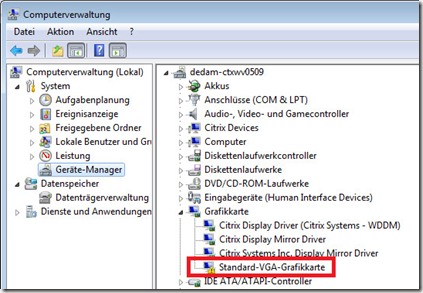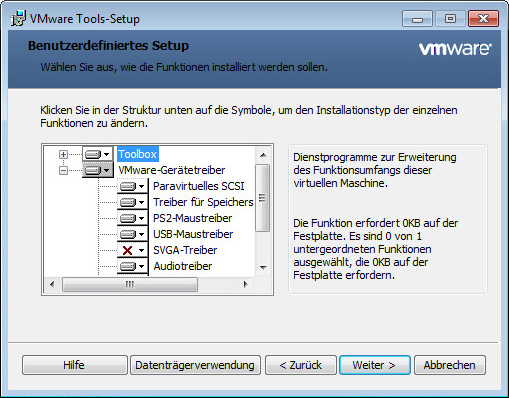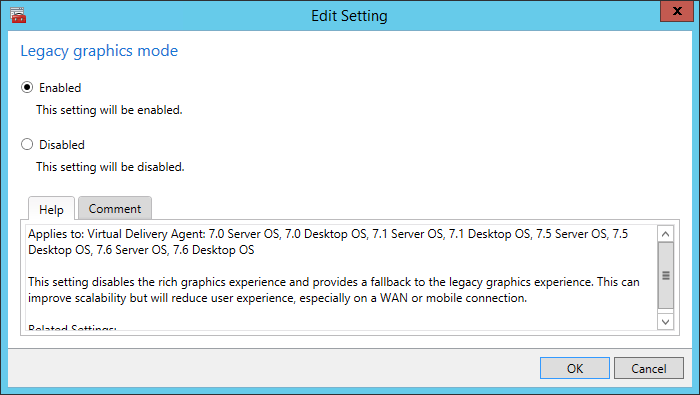

- Vmware Svga 3d Windows 10
- Vmware Svga 3d Drivers For Mac Os
- Vmware Svga Ii Adapter Driver
- Vmware Svga 3d Driver Mac Os X
- Download Vmware Svga 3d Driver
- Vmware Svga Driver Windows 10
When you enable 3D graphics, you can select a hardware or software graphics renderer and optimize the graphics memory allocated to the virtual machine. You can increase the number of displays in multi-monitor configurations and change the video card settings to meet your graphics requirements.
The default setting for total video RAM is adequate for minimal desktop resolution. For more complex situations, you can change the default memory. Typically, 3D applications require a video memory of 64–512MB.
When you install vmware tools, a virtual svga driver replaces the default vga driver, which allows for only 640 x 480 resolution and 16-color graphics. On windows guest operating systems whose operating system is windows vista or later, the vmware svga 3d microsoft - wddm driver is installed. VMware SVGA 3D Microsoft Corporation - WDDM driver is a windows driver. Download drivers for VMware SVGA 3D Grafikkarte, or download DriverPack Solution software for automatic driver download and update. Virtual Shared Graphics resources are vSphere.
Fault Tolerance is not supported for virtual machines that have 3D graphics enabled.
Vmware Svga 3d Windows 10

- Verify that the virtual machine is powered off.
- Verify that the virtual machine compatibility is ESXi 5.0 and later.
- To enable 3D graphics in virtual machines with Windows 8 guest operating systems, the virtual machine compatibility must be ESXi 5.1 or later.
- To use a Hardware 3D renderer, ensure that graphics hardware is available. See Configuring 3D Graphics.
- If you update the virtual machine compatibility from ESXi 5.1 and later to ESXi 5.5 and later, reinstall VMware Tools to get the latest SVGA virtual graphics driver and Windows Display Driver Model driver.
- Verify that you have the Virtual machine.Configuration.Modify device settings privilege on the virtual machine.
Procedure
- Right-click a virtual machine in the inventory and select Edit Settings.
- On the Virtual Hardware tab, expand Video Card.
- Select custom or automatic settings for your displays from the drop-down menu. Option
Description Auto-detect settings Applies common video settings to the guest operating system. Monotype garamond pro bold font free download.
Specify custom settings Lets you select the number of displays and the total video memory.
- Select the number of displays from the drop-down menu. You can set the number of displays and extend the screen across them.
- Enter the required video memory.
- (Optional) Click Video Memory Calculator to calculate the required video memory based on the maximum number of displays and resolution that the guest operating system must support, and click OK.
- (Optional) Click Enable 3D support. This check box is active only for guest operating systems on which VMware supports 3D.
- (Optional) Select a 3D Renderer. Option
Description Automatic Selects the appropriate option (software or hardware) for this virtual machine. Software Uses normal CPU processing for 3D calculations. Hardware Requires graphics hardware (GPU) for faster 3D calculations.
Note: The virtual machine will not power on if graphics hardware is not available. - Click OK.
Device drivers improve sound, graphics, networking, and storage performance. If you perform a custom VMware Tools installation or reinstallation, you can choose which drivers to install.
The set of drivers that are installed when you install VMware Tools depends on the guest operating system and the VMware product. For detailed information about the features or functionality that these drivers enable, including configuration requirements, best practices, and performance, see the documentation for your VMware product. The following device drivers can be included with VMware Tools.
On Windows guest operating systems whose operating system is Windows Vista or later, the VMware SVGA 3D (Microsoft - WDDM) driver is installed. This driver provides the same base functionality as the SVGA driver, and it adds Windows Aero support.
For example, Windows Server 2008 defaults to LSI Logic SAS, which provides the best performance for that operating system. In this case, the LSI Logic SAS driver provided by the operating system is used.
VMware supplies a special SCSI driver for virtual machines that are configured to use the BusLogic virtual SCSI adapter. Virtual machines do not need this driver if they do not need to access any SCSI devices or if they are configured to use the LSI Logic virtual SCSI adapter.
The driver is included as part of the VMware Tools package or comes bundled with VMware ESX/ ESXi. It is available on the host as a floppy image at /vmimages/floppies/vmscsi.flp. The driver can be used in Windows XP, Windows Server 2003, or Windows 2000.
Vmware Svga 3d Drivers For Mac Os
When you install VMware Tools, a VMXNET NIC driver replaces the default vlance driver.
Vmware Svga Ii Adapter Driver

- File Introspection Driver: The File Introspection driver uses the hypervisor to perform antivirus scans without a bulky agent. This strategy avoids resource bottlenecks and optimizes memory use.
- Network Introspection Driver: The Network Introspection driver supports NSX for vSphere Activity Monitoring.
Do not delete or replace existing inbox drivers for Linux that are distributed by your OS vendors. Deleting or replacing these drivers might cause conflict with future updates to the drivers. Contact your OS vendor or OS community for availability of specific updates to drivers.
See http://kb.vmware.com/kb/2073804 for information about availability, maintenance, and support policy for inbox drivers for Linux.

Vmware Svga 3d Driver Mac Os X
If you use Workstation or Fusion, you can install the Shared Folders component. With Shared Folders, you can easily share files among virtual machines and the host computer. The VMHGFS driver is a file system redirector that allows file system redirection from the guest operating system to the host file system. This driver is the client component of the Shared Folders feature and provides an easy to use alternative to NFS and CIFS file sharing that does not rely on the network. For Linux distributions with kernel version 3.10 and later, a new FUSE based Shared Folders client is used as a replacement for the kernel mode client.
Download Vmware Svga 3d Driver
Vmware Svga Driver Windows 10
VMware Tools installation include the VMware AppDefense, a security management and monitoring solution. AppDefense agent can be installed on the guest virtual machine using the VMware Tools installer. However, VMware Tools cannot install the AppDefense component automatically. You need to install the component manually.
